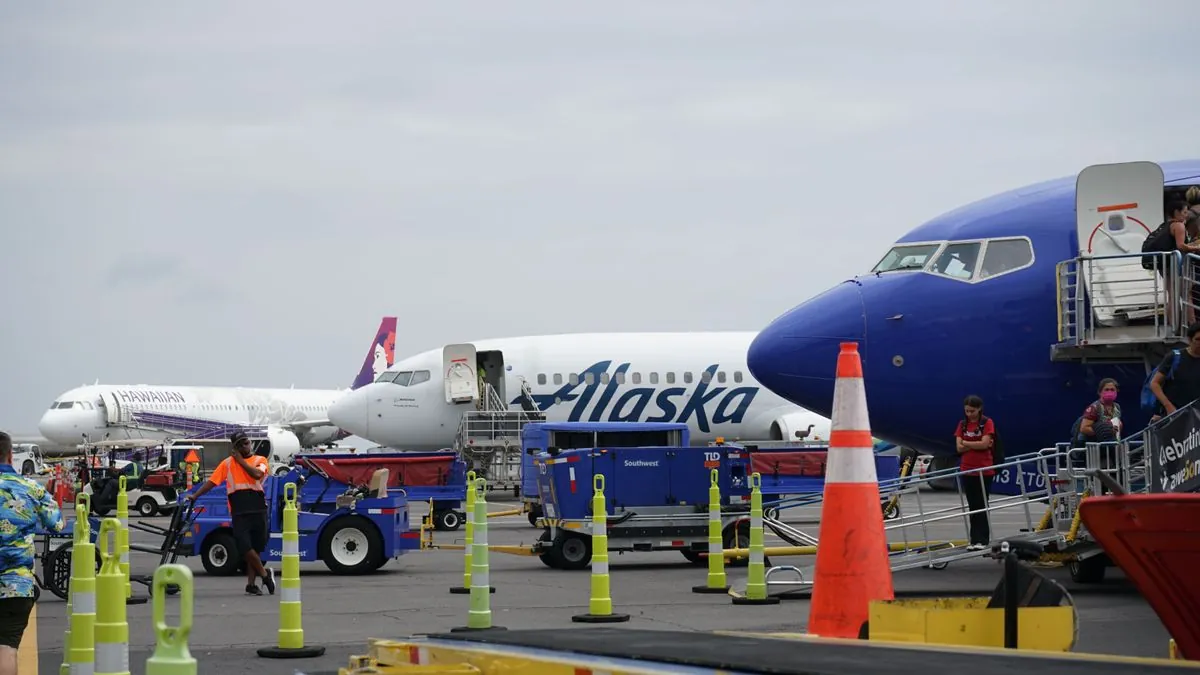In a significant development for the airline industry, Alaska Airlines and Hawaiian Airlines have successfully navigated a crucial regulatory checkpoint in their proposed merger. The nearly $2 billion deal, which represents the first major airline consolidation in approximately seven years, has moved closer to fruition after the U.S. Department of Justice's review period expired without legal intervention.
The merger, initially announced in December 2023, aims to enhance mainland U.S. travel options from Hawaii and bolster Alaska Airlines' international footprint. This strategic move comes as the airline industry continues to recover from the unprecedented challenges posed by the COVID-19 pandemic, which saw global passenger traffic plummet by 65.9% in 2020 compared to the previous year.
Alaska Airlines, founded in 1932 and headquartered in Seattle, stated in a news release:
"The time period for the U.S. Department of Justice ... to complete its regulatory investigation of the proposed combination of Alaska Airlines and Hawaiian Airlines ... has expired."
[[Alaska Airlines Statement]]
This development has taken some industry observers by surprise, given the Biden administration's stated commitment to scrutinize mergers in highly concentrated sectors. The airline industry in the United States is currently dominated by four major carriers - American, Delta, United, and Southwest - which collectively account for 80% of the market share.
To address potential concerns, Alaska Airlines has made several commitments to preserve the integrity of Hawaiian Airlines and protect Hawaii's interests. These include maintaining the Hawaiian Airlines brand and safeguarding local union jobs. Hawaii Governor Josh Green expressed support for the merger, highlighting its potential to expand access to mainland destinations for Hawaii residents.
The proposed merger still requires approval from the U.S. Department of Transportation, which oversees the economic and safety aspects of air transportation. This regulatory body's decision will be crucial in determining the final outcome of the deal.
If approved, the merger would bring together two airlines with rich histories and unique market positions. Hawaiian Airlines, founded in 1929, holds the distinction of being the oldest U.S. carrier with continuous service under its original name. It has also maintained an impeccable safety record, never experiencing a fatal accident or hull loss throughout its operational history.
The combined entity would continue to operate under separate brands, with Alaska Airlines pledging to establish a significant regional headquarters in Hawaii. This approach mirrors Alaska Airlines' existing regional hubs in Alaska and California, demonstrating a commitment to maintaining strong local presences.
The merger is seen as a strategic response to the evolving airline landscape. Since the Airline Deregulation Act of 1978 removed government control over fares, routes, and market entry, the industry has undergone significant consolidation. The last major U.S. airline merger occurred in 2017 when Alaska Airlines acquired Virgin America in a $2.6 billion deal.
As the airline industry continues to evolve, this merger represents a significant step towards increased competition with the "Big Four" carriers. It also highlights the ongoing importance of air travel to geographically isolated states like Alaska and Hawaii, which rely heavily on aviation for connectivity to the wider world.
The outcome of this merger could have far-reaching implications for the U.S. airline industry, potentially influencing future consolidation efforts and shaping the competitive landscape for years to come. As the final regulatory hurdles approach, all eyes will be on the Department of Transportation's decision, which will ultimately determine the fate of this landmark deal.
